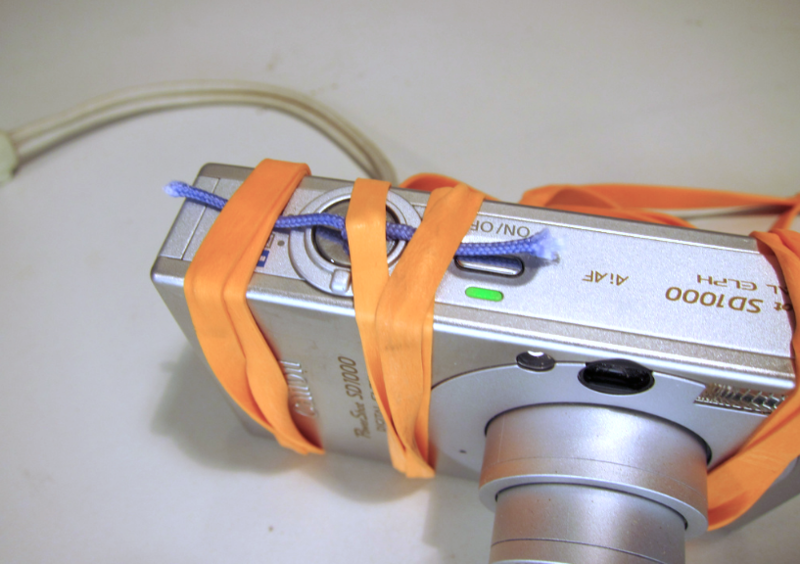
Camera Trigger
This page describes how to set up a camera to repeatedly/continuously take pictures during balloon or kite mapping.
(Lead image by @mathew)
For timing two cameras together, see dual camera triggering
How do you keep the camera continuously shooting photos during flight?
Many cameras can be set in "continuous shooting mode", which generally allows you to hold down the trigger button to take many continuous photos. This means you can use the simple "Knot and rubber band" method, listed below.
Note that continuous mode is different for each camera, and not all cameras have it. Check the camera selection page. We recommend Canon cameras for reliability; some cameras will shut off after a few minutes. See below for details.
Taking lots of photos is generally easier than controlling when a photo is taken. Once you find a camera with continuous shot, test the battery to see how long it will shoot. Put in a memory card with 4gb+. Consider getting a second battery.
Some cameras can be set programmatically, such as Canons using the Canon Hack Development Kit (CHDK), and CDHK can be triggered via the camera's USB port. Some Canons can also also be triggered by infrared remote control codes, useful for stereo or near infrared camera pairs, along with Stereo DataMaker.
Dave Mitchell wrote easy Javascript programs for installing CDHK and Stereo DataMaker
Cris Benton and others use motors to trigger cameras that can't be programmed. A more drastic option is to hack a timer directly into the camera's shutter button circuit, like this 555 timer.
Activities
Although the "knot and rubber band" technique is easiest, here is a collection of guides to different ways to trigger a camera. Add your own!
| Purpose | Category | Status | Author | Time | Difficulty | Replications |
|---|---|---|---|---|---|---|
| Sky Cam - User Guide | - | - | @mercyorangi | - | - | 0 replications: Try it » |
| CHDK Scripting | - | - | @nicholas | - | - | 1 replications: Try it » |
| Auto EOS M | - | - | @cfastie | - | hard | 0 replications: Try it » |
| Use a rubber band and knotted string to trigger a camera | build | complete | @mathew | 15m | easy | 0 replications: Try it » |
| Add GPS logging to a Saturn V Rig | build | - | @cfastie | - | medium | 0 replications: Try it » |
| Shutter timer upgrade | - | - | @cfastie | - | - | 0 replications: Try it » |
| Adjustable 555-based shutter trigger circuit | - | - | @mathew | - | - | 0 replications: Try it » |
| Tiny remote control | - | - | @cfastie | - | - | 1 replications: Try it » |
Activities should include a materials list, costs and a step-by-step guide to construction with photos. Learn what makes a good activity here.